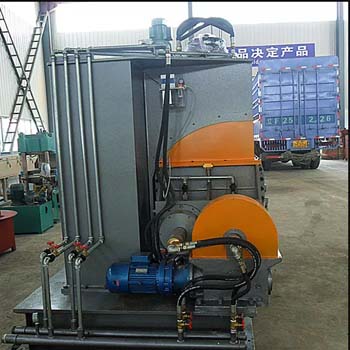In these field of rubber compounding, polymers, plastic , materials science, chemical and other material science,lab dispersion kneaders play a important role in achieving uniform dispersion and optimal mixing performance. Among these industries, the pressured lab kneader work as the most powerful and precise kneading equipment ,which are specially designed to handle complex materials under controlled pressure conditions. But what exactly is a pressured lab kneader, and why is it essential in modern labs?
What Is a Pressured Lab Kneader?
A pressured lab kneader is also known as tilt internal mixer , it is a small-scale, enclosed mixing machine ,which are equipped with rotor blades, sealed mixing chamber and pressure lid which allows for thorough material flow and controlled shear mixing within the mixing chamber.
When working ,the rotating rotor generate strong shearing, kneading, and compressive forces to process viscous compound materials. It allows operators to repeat the procedure of production processes on a laboratory scale while simulating pressure-sensitive reactions.
Different from traditional open-type lab dispersion kneaders, the pressured dispersion kneader feature a vacuum/pressurized mixing chamber, the compound material is usually blended ,disperse and mixed with other curing agent under desired temperature and pressure , so that ensure complete control over the material properties during mixing process.
Key Features of Pressured Lab Dispersion Kneaders
1. Sealed Mixing Chamber – The mixing chamber body adopts wear resistant alloy integral casted and the tangential area are welded German imported wearing resistant high speed steel, and chrome plated. It is can be designed to operate under positive or negative pressure (vacuum) environment, which is crucial for controlling volatile compounds and preventing contamination.
2. M Design Rotor – The blade adopts “M” design structure, which ensures material mixed more evenly and thoroughly.
3. Temperature Controlled– The equipment is integrated heating/cooling systems ,so that ensure precise thermal management and material homogenated and mixed thoroughly .
4. Intermeshing or Tangential Blades – The two rotor blade can be custom designed specially ,which allow for efficient dispersion of materials like rubber, polymers, chemical ,polymer ,color masterbatch ,pigment ,sealant and specialty chemicals material.
5. Pressure Gauge & Vacuum Port – This feature provides real-time situation & process result , and it allows to operator flexibly.
6. Material Compatibility – The pressured type kneader can handle various kinds of high-viscosity or reactive materials, including elastomers, thermosets, chemical ,polymer and masterbatches.
Advantages of Pressured Kneader Mixer:
* Enhanced Control: Pressure and vacuum environments allow for better control over chemical reactions and dispersion.
* Safety for Reactive Compounds: Minimizes exposure and unwanted reactions with sensitive materials.
* Improved Product Quality: Uniform texture, color, and composition—especially critical for high-value materials.
* Scalability: Provides accurate data for scaling up to industrial production.
A Wide Range Industries Pressured Lab Kneaders Used:
* Rubber Compounding: Ideal for mixing rubber additives, fillers, and elastomers where pressure control enhances dispersion.
* Polymer Research: Helps develop new plastic and composite materials under simulated production conditions.
* Chemical & Pigment Blending: Prevents oxidation and evaporation when working with volatile compounds.
* Battery Materials & Ceramics: Useful for lithium-ion battery pastes or ceramic slurry processing where uniformity is key.
In conclusion , whether you are a researcher developing next-gen materials or a lab engineer working on sensitive chemical blends, a pressured lab kneader is a must-have piece of mixing equipment. Its special feature allow you to operate under controlled pressure conditions,which enhances itselt mix compound material uniformity and completely in high quality result ,and also can greatly enhance the product capability, it is undoubtedly the key factors in both innovation and product development.
If you’re looking to invest in high-performance lab dispersion kneader equipment ,then consider a pressured dispersion kneader would satisfy your formulation needs .







